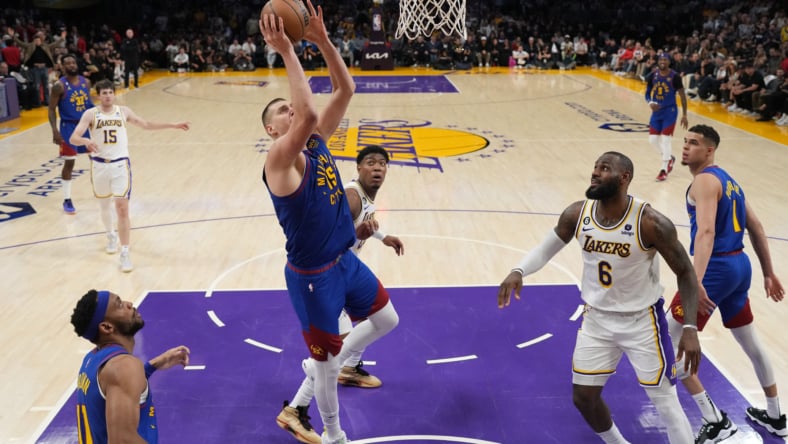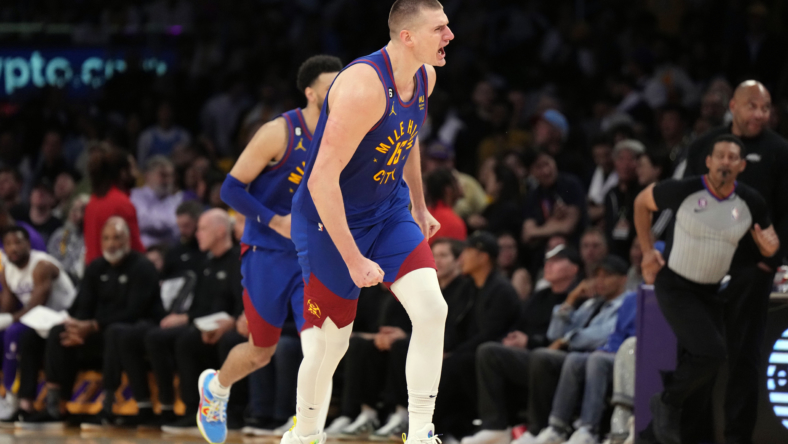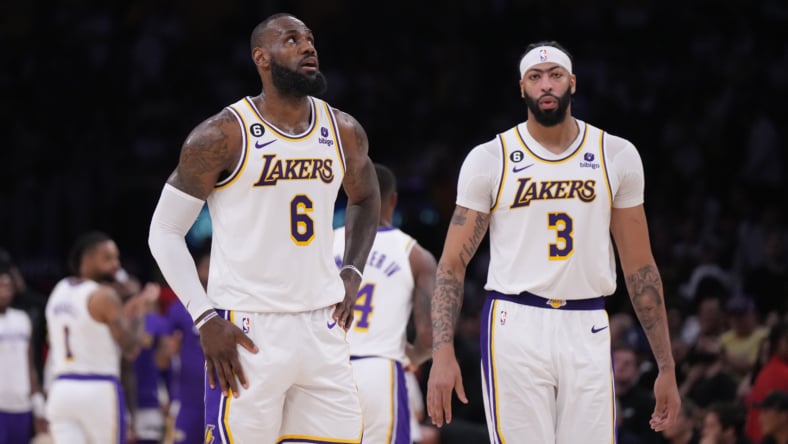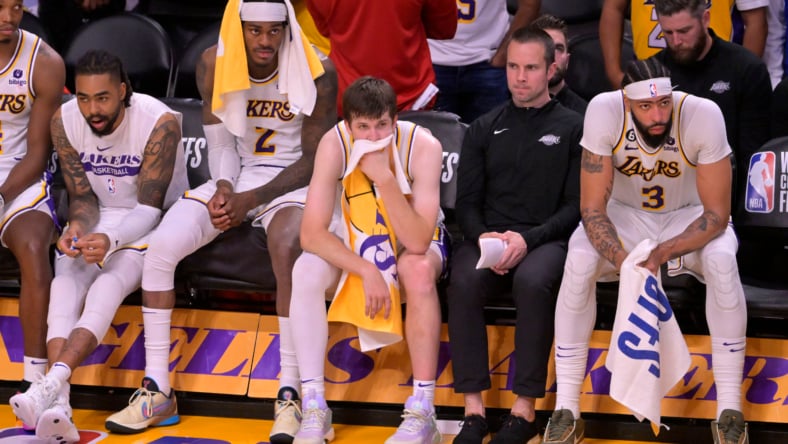LOS ANGELES – The Denver Nuggets may play in the NBA Finals for the first time in franchise history.
With the Nuggets finishing with a 119-108 win over the Los Angeles Lakers on Saturday in Game 3 of the Western Conference Finals, Denver still needs to win one more game in the best-of-seven series. No team in NBA history has ever overcome a 0-3 playoff series deficit. Nonetheless, the Lakers have to chance to rectify the outcome in Game 4 on Monday.
For now, here are five takeaways from the Nuggets’ Game 3 win over the Lakers.
Related: NBA playoff predictions: Bracket picks & 2023 Finals champion
Denver Nuggets closed this game at the end

It appeared the Lakers and Nuggets would fight to the very end. But then the Nuggets stormed out to a 13-0 run and outscored the Lakers, 24-12, in the final 7:45. Then, the Lakers missed 10 of their last 12 shot attempts. Though both teams competed, the Nuggets and Lakers approached crunch time in a different way.
Denver seemed more disciplined with its ball movement. The Lakers forced shots. The Nuggets played with more energy. The Lakers looked more tired. All factors contributed to the end result.
Nikola Jokic had a slow first half followed by a strong second half

The Lakers finally found the solution for stopping the Nuggets’ star center. Get him in foul trouble. Be physical with him on defense. And hope Jokic misses some that he normally makes.
Jokic collected his third foul with 33.1 seconds left in the first half after finishing with five points on a 2-for-8 clip with four assists and three rebounds. But he bounced back in the second half with 19 points. Jokic collected his fourth foul with the Nuggets holding a 68-63 lead with 7:24 left in the third quarter. But that didn’t stop him from playing aggressively.
That marks a stark difference from what Jokic displayed in Game 1 (34 points on 12-for-17 shooting, 21 rebounds, and 14 assists) and in Game 2 (23 points, 17 rebounds, and 12 assists). To Jokic’s credit, though, he didn’t allow foul trouble to inhibit his aggressiveness.
Related: How Jamal Murray fueled Denver Nuggets’ Game 2 win over Los Angeles Lakers
Jamal Murray has inconsistent performance

Had he felt inclined, the Nuggets guard could’ve called his shot multiple times, just as he did in Game 2. Murray (5-for-6) outperformed the Lakers single-handedly (a combined 4-for-14) by the end of the first frame. By halftime, Murray (30 points on a 13-for-20 clip) scored more than his other teammates combined (28 points on 9-for-22 shooting).
Despite that trend, the Lakers didn’t do much to try and stop Murray. They often just played him in single coverage instead of a double-team. Murray made them pay by canning those open or barely-contested shots with ease.
Murray then went scoreless for the third quarter. After missing eight consecutive shots, Murray finally scored again after making a 3 to give the Nuggets a 102-94 lead with 6:15 left.
It didn’t appear the Lakers did anything dramatically to limit Murray.
While he missed the same kind of shots he made in the first half, the Nuggets’ supporting cast mitigated his drop-off in the second half. Kentavious Caldwell-Pope (17 points), Bruce Brown (15), and Michael Porter Jr. (14) also cracked double figures to take some of the pressure off.
Nuggets and Lakers show vast difference in 3-point shooting

The Nuggets and Lakers were similar in that both their stars and role players prioritized crisp ball movement. Despite sharing the ball, it still resulted in a huge discrepancy between how Denver and LA fared from deep. While the Nuggets shot 17-for-41 from 3-point range, the Lakers went only 10-for-32 on shots from beyond the arc.
Murray (5-for-11), Pope (4-for-7), Jokic (2-for-5), and Jeff Green (1-for-2) all shot well from deep. The Lakers hardly had as much success from distance.
Austin Reaves (3-for-5), Lonnie Walker (2-for-4), and Rui Hachimura (1-for-3) became the lone players to show range. LeBron James (3-for-9), D’Angelo Russell (1-for-6), and Dennis Schroder (0-for-2) couldn’t buy a basket.
Given the stakes, the Lakers should have been more deliberate on who shot from distance. That onus falls both on the players taking the shots as well as the players that fed them the ball.
Related: Why the Denver Nuggets are a better team than what the Lakers faced in the NBA bubble
Reaves and Davis were Lakers’ only consistent players

Reaves played as if he tried to carry the Lakers on their own. Davis stayed aggressive on both ends of the floor. But the Lakers lacked consistency elsewhere.
James showed varying flashes of excellence and fatigue. Russell couldn’t make shots. The Lakers collected too many fouls (18) and turnovers (12). Overall, this was a Lakers team that ran out of gas. Reaves and Davis still gave them a fighting chance, but eventually, they just sputtered.

